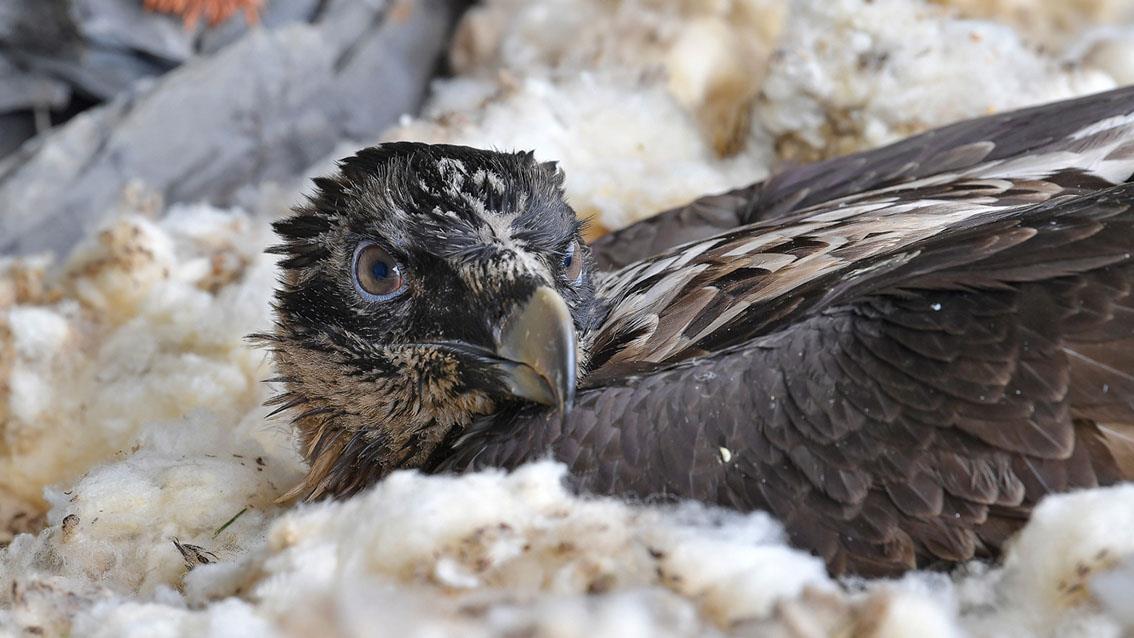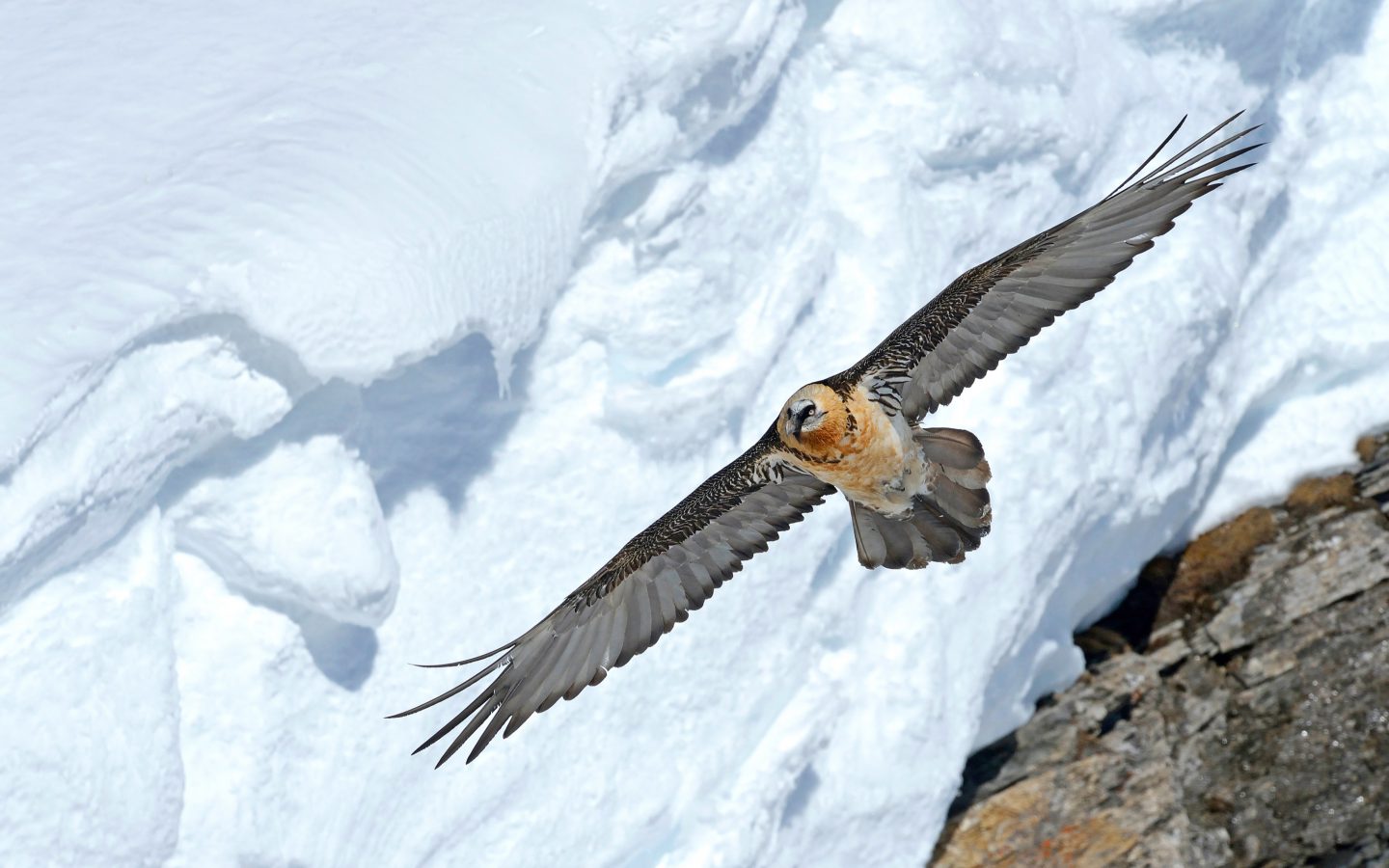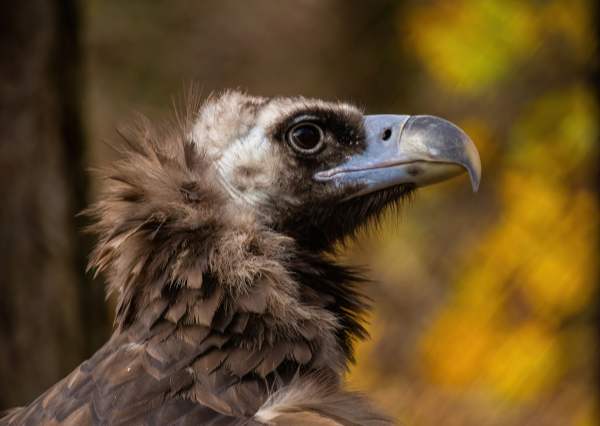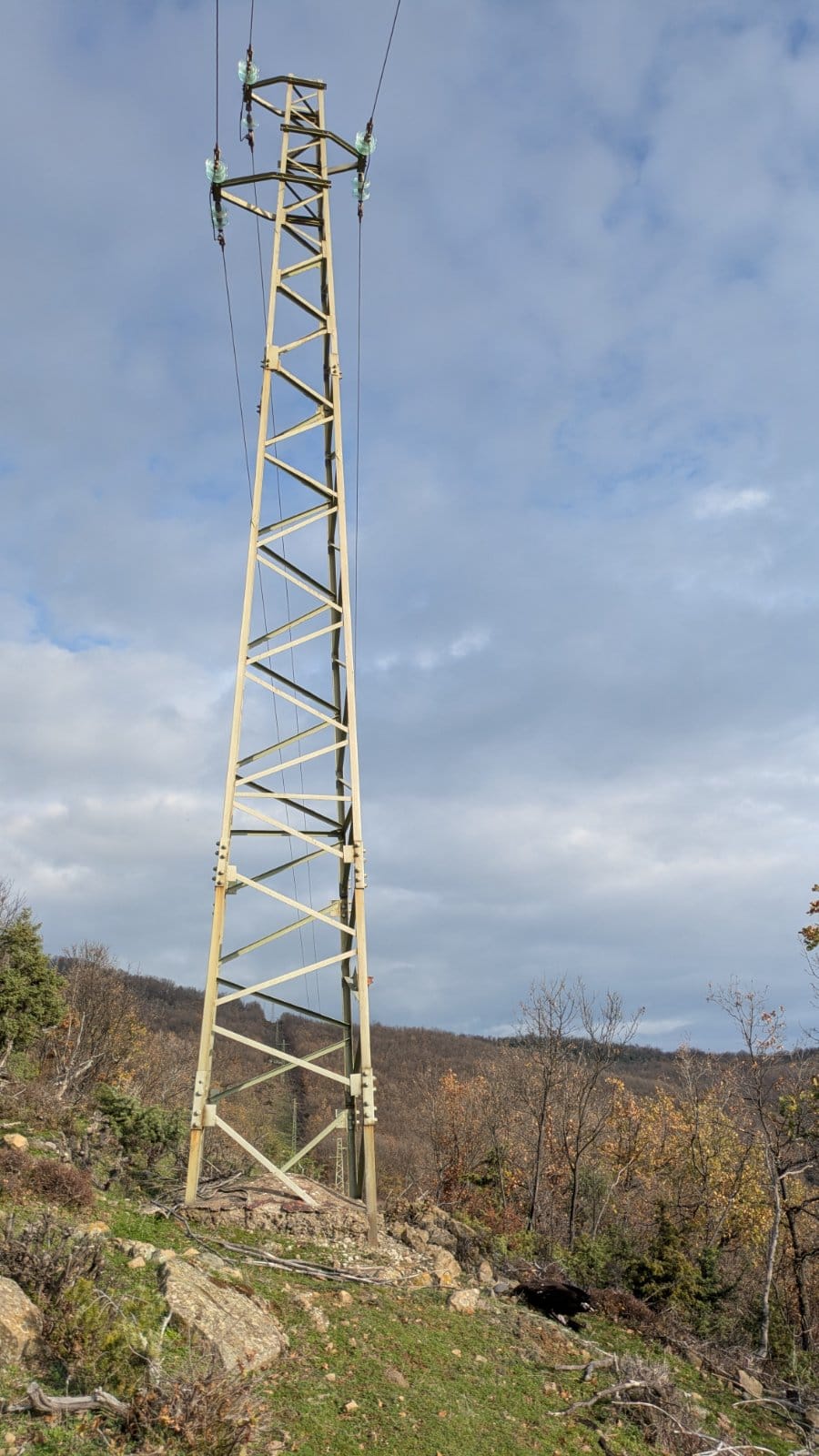GPS/GSM tagging provides essential information for the conservation of the species.
In June, the LIFE Aegypius Return teams already tagged three chicks with GPS/GSM transmitters, and more will follow soon. Monitoring the reproduction of the species and knowing the age of the chicks is essential for these efforts.
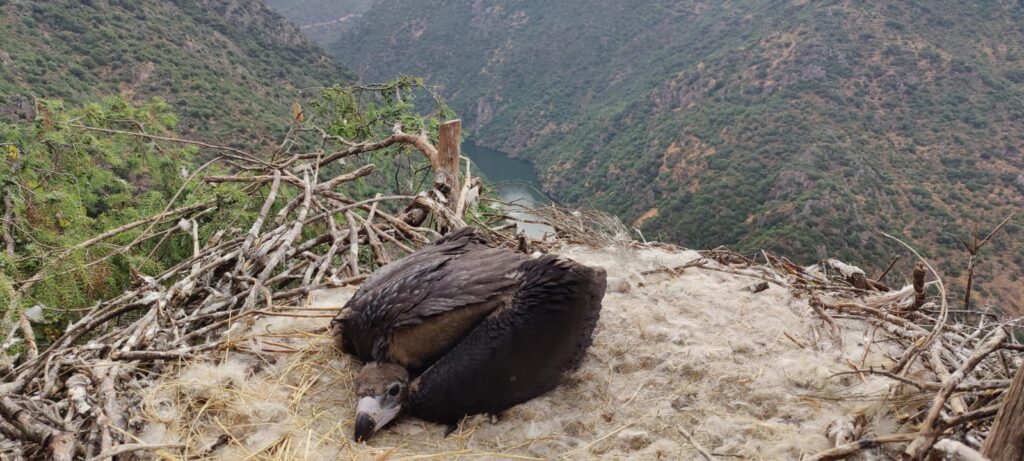
All eyes on the Cinereous Vulture
Monitoring the reproduction of the Cinereous Vulture (Aegypius monachus) is a complex and demanding task that takes up nine months a year. Nest building and mating begin around January, and the chicks only start flying in August or September. During this long period, and in order to calculate the reproduction parameters – indices that allow to assess the effective success of each breeding season – each nest is meticulously monitored. The work follows a protocol that allows for detailed observation while also guaranteeing the safety of the birds, avoiding their disturbance.
Each year, the monitoring teams record the nuptial behaviours, incubation and hatching of the chicks, and follow their development. April marks the first hatchings, followed by a highly sensitive period where habitat disturbance or adverse weather events (such as a storm or a heatwave) can jeopardise the survival of the young vultures, who are entirely dependent on their parents. Each pair of Cinereous Vultures lays only one egg per clutch, which increases the species’ vulnerability.
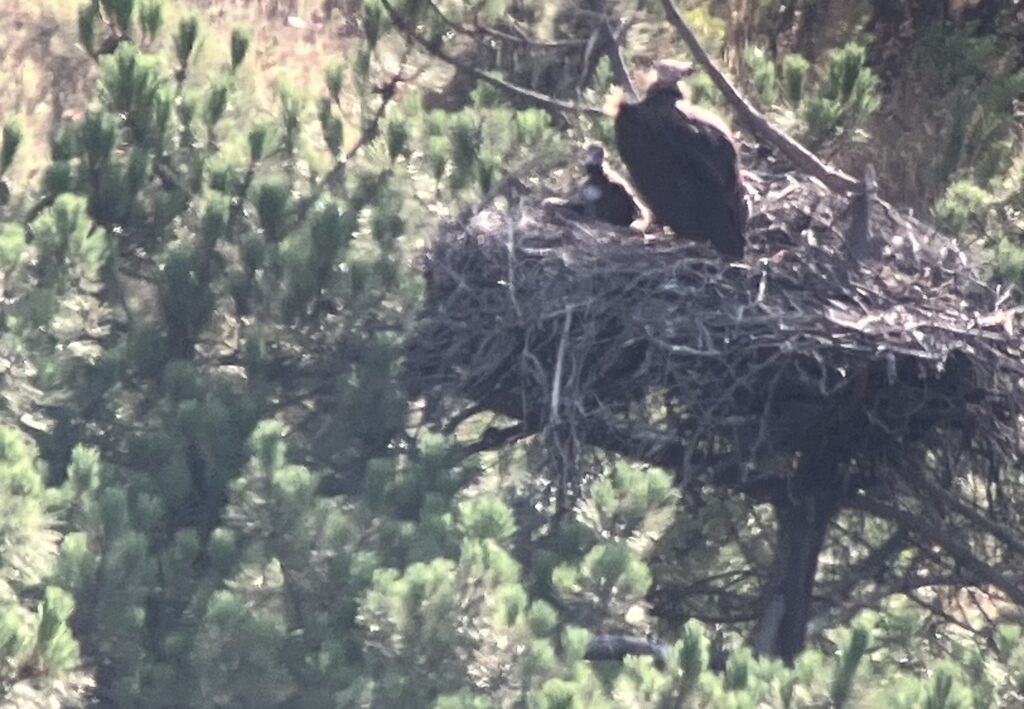
Tagging for better conservation
If all goes well with the development of the chicks, at around 80 to 90 days, they are big enough to be tagged but still can’t fly, which allows for a safe approach to the nest. Tagging consists of fitting identifying rings and a GPS/GSM transmitter. This technology records the movements and behaviour of each tagged vulture, which allows to understand the species’ ecological needs in terms of habitat, food and rest, but also the threats it faces and mortality factors.
By detecting an excessively prolonged pause or anomalous behaviour, the remote monitoring teams can organise a rescue operation. In the event of injury, they can send the vulture for recovery, or, in case of death, investigate the causes and, in a more sustainable way, combat the problems.
Every contact with individuals of this still relatively rare species in Portugal is also optimised for collecting biological samples, such as blood and feathers. This material is used in various studies (genetic, toxicological, biochemical, among others), which reinforce the available scientific knowledge about the species and, thus, help define species conservation strategies and treatments for the recovery of each injured individual.
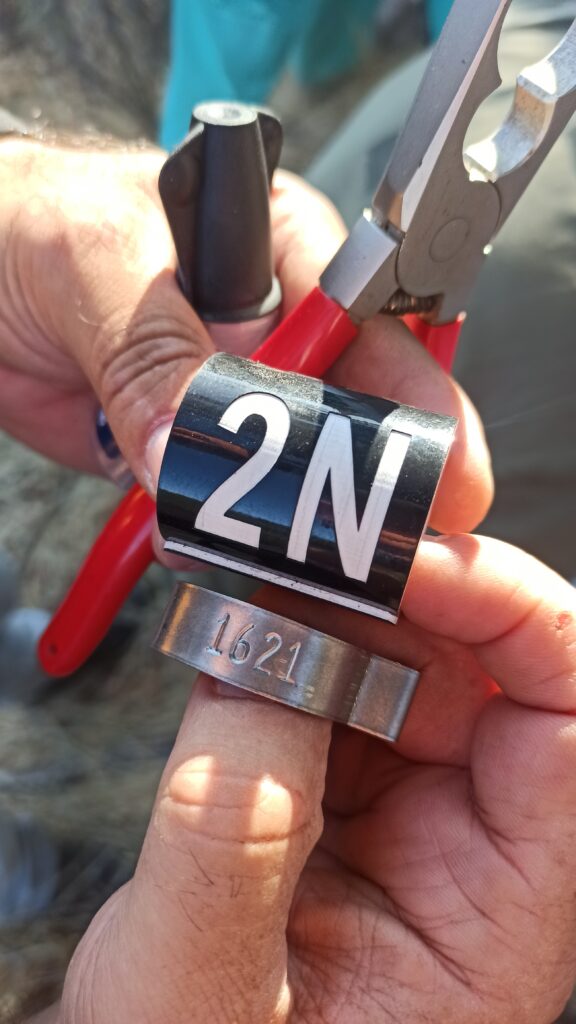
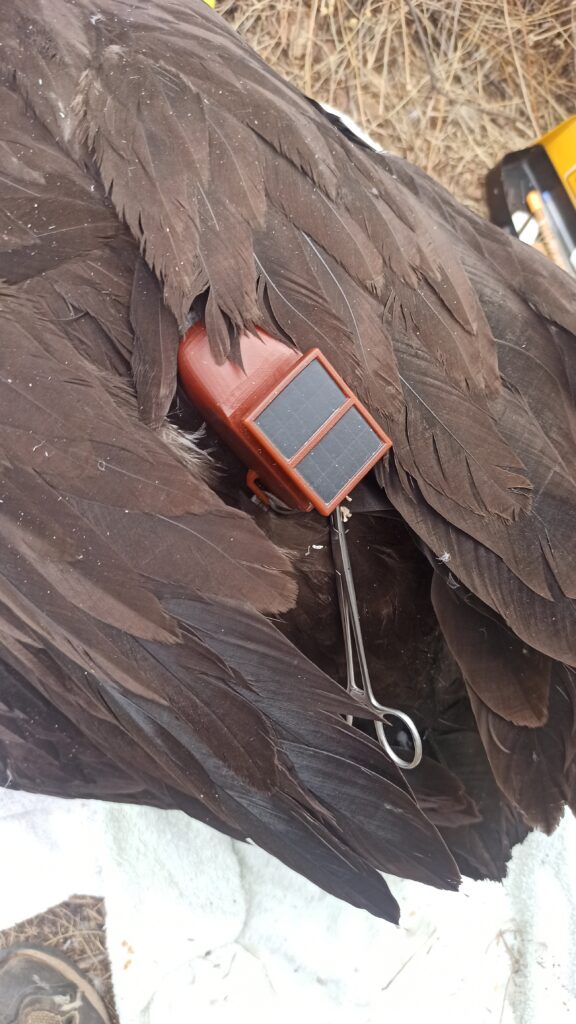
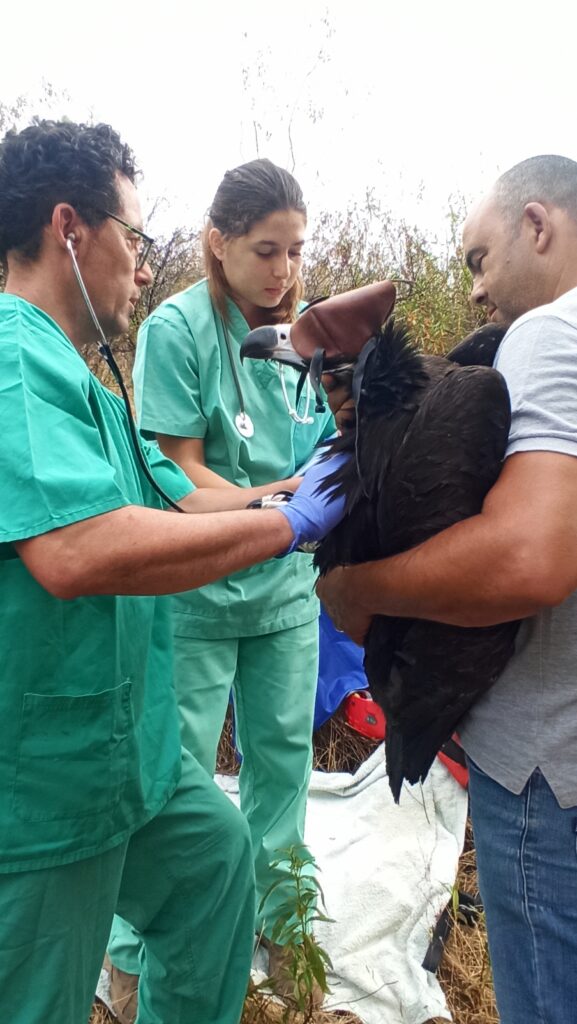
Ringing, GPS/GSM tagging and veterinary examination of a Cinereous Vulture chick. © VCF
Getting down to work
In June 2025, three Cinereous Vulture chicks were tagged with GPS/GPS transmitters, out of a total of five chicks ringed in the colonies of Douro Internacional, Herdade da Contenda, and Vidigueira/Portel. In the coming month, work will continue in the same colonies and also in Tejo Internacional.
Unfortunately, not all of the chicks can be tagged, due to budget constraints and difficulties in accessing the nests. All the work involved in climbing up to the nests, collecting samples, ringing and tagging is carried out by a very small number of highly specialised technicians who are accredited by the nature conservation authorities.
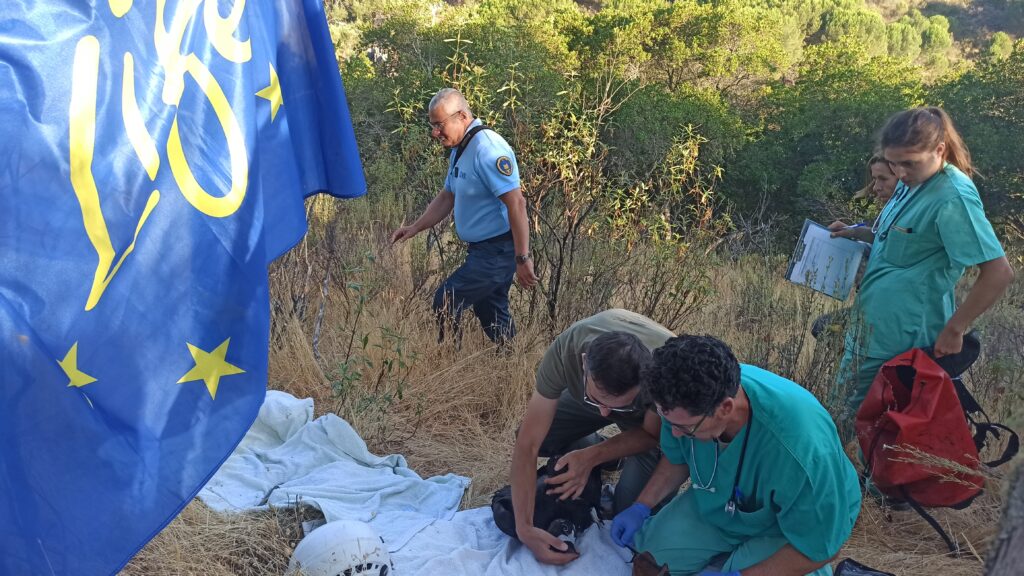
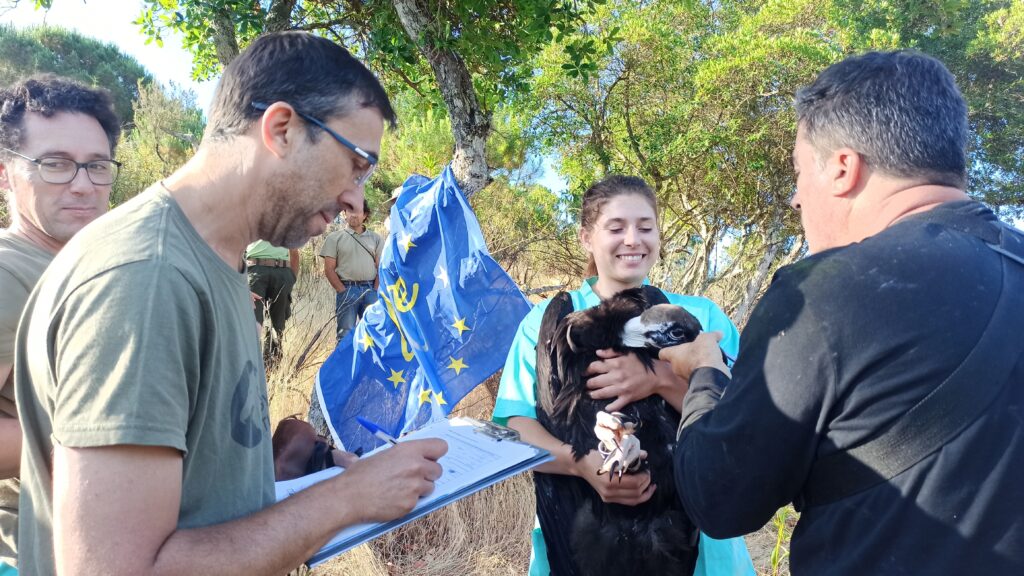
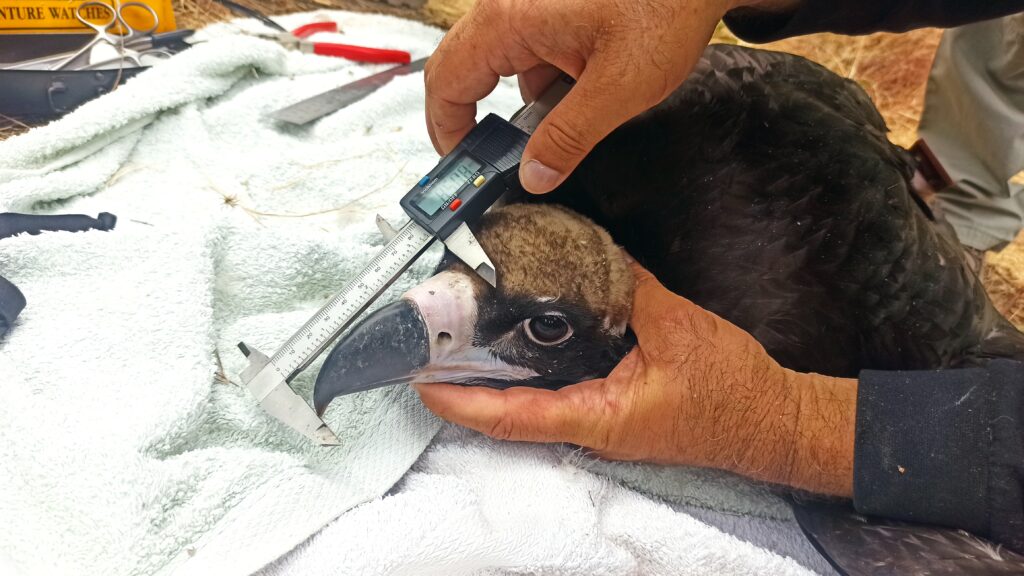
A team effort
In Portugal, there are currently five known Cinereous Vulture breeding colonies: Douro Internacional, Serra da Malcata, Tejo Internacional, Herdade da Contenda and Vidigueira/Portel. All the colonies are monitored in detail as part of the LIFE Aegypius Return project. Nearly four decades after the species became extinct in Portugal, in 2024, at least 108 pairs nesting were confirmed, a result that has brought much hope for the recovery of the Cinereous Vulture in the country.
These results are only possible thanks to the collaboration between a large number of people and organisations committed to the conservation of nature and the Cinereous Vulture. In particular, regarding the monitoring of Cinereous Vulture reproduction in Portugal, the LIFE Aegypius Return partners thank the support of the technicians and nature rangers from ICNF (Instituto da Conservação da Natureza e das Florestas), Rewilding Portugal, and Quercus.
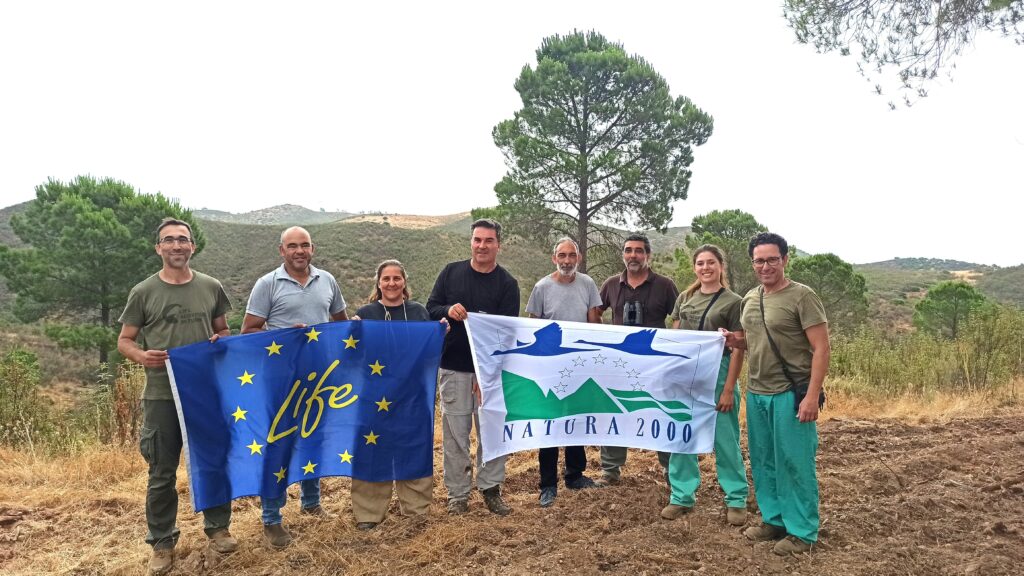
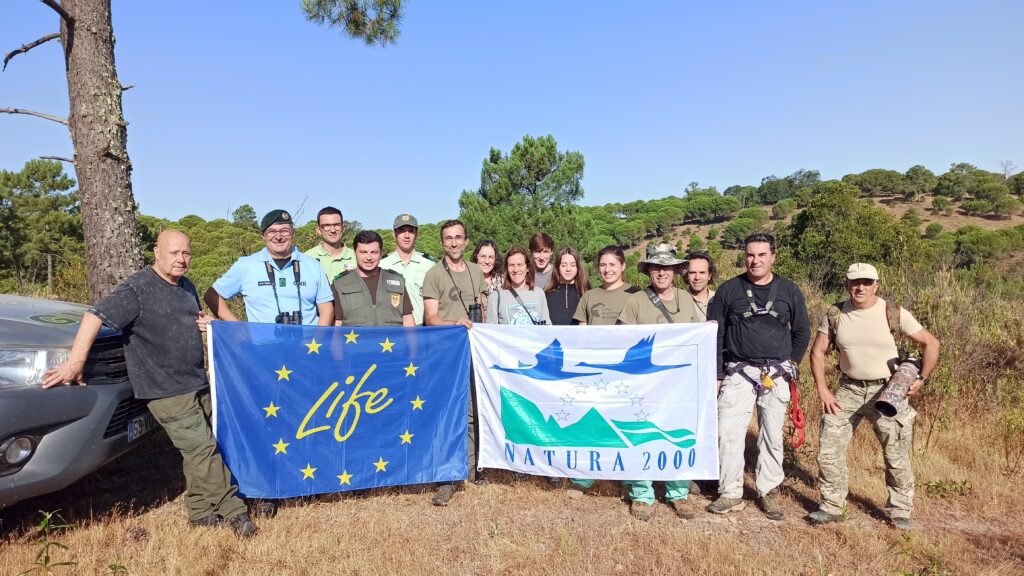
Group pictures at Herdade do Monte da Ribeira (Vidigueira/Portel colony) (left) and Herdade da Contenda (right).
For the tagging work carried out in June, thanks are extended for the support and participation of:
– Douro Internacional: partners Palombar, ICNF – Direção Regional do Norte, veterinary team from HV-UTAD (Hospital Veterinário da Universidade de Trás-os-Montes e Alto Douro).
– Vidigueira/Portel: partners LPN (Liga para a Protecção da Natureza) and VCF (Vulture Conservation Foundation), Herdade do Monte da Ribeira – Eng.ª Mariana Carmona and António Aleixo, ICNF, Rogério Cangarato, Jade Gava (École Nationale Vétérinaire de Toulouse), Carlos Pacheco.
– Herdade da Contenda: partners LPN, VCF, Herdade da Contenda and GNR (Guarda Nacional Republicana) – Beja Territorial Command and Moura Territorial Detachment, ICNF – Alentejo Regional Directorate, Maria Dias (LPN and University of Lisbon), Pinto Moreira, José Figueira, Vânia and Rodrigo Marujo, Joana Rocha, Jade Gava, Carlos Pacheco.
About LIFE Aegypius Return

The LIFE Aegypius Return project is co-financed by the European Union’s LIFE programme. Its success depends on the involvement of all the relevant stakeholders, and the collaboration of the partners: the Vulture Conservation Foundation (VCF), the coordinating beneficiary, and the local partners Palombar – Conservação da Natureza e do Património Rural, Herdade da Contenda, Sociedade Portuguesa para o Estudo das Aves, Liga para a Protecção da Natureza, Associação Transumância e Natureza, Fundación Naturaleza y Hombre, Guarda Nacional Republicana and Associação Nacional de Proprietários Rurais Gestão Cinegética e Biodiversidade.

